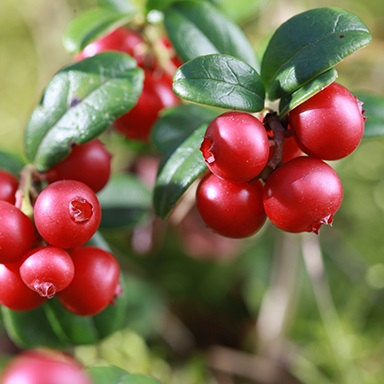Search
Category
New Items!
Special Searches
Harvest
Zone
Rootstock
Pollenizer
Stock Status
Lingonberry
Lingonberry (Vaccinium vitis-idaea majus)
Here’s another plant that we here in North America are just beginning to appreciate. Scandinavians, on the other hand, have been harvesting these highly nutritious berries by the tonne for many centuries. With bright red, pea-sized fruits against a backdrop of lush, glossy green leaves, they also make a feast for the eyes. An added bonus is that the leaves retain their rich green colour all winter long. Lingonberries make superb jam especially when combined with rosehips. The ones that didn’t get eaten fresh are just the ticket in meat stews, sauces, juices and wine.
These plants require very well drained, acidic soil, even more so than most blueberries. In fact, with regular watering they do well in pure peat moss. Because lingonberries hail from northern regions, they do best in partial shade in warmer zones. Inter-plant with low-bush blueberries for a truly impressive ground cover.
Potted

Lingonberry : RED CANDY 2 gallon pot
$29.95

Lingonberry : RED SUNSET 1 gallon pot
$19.95